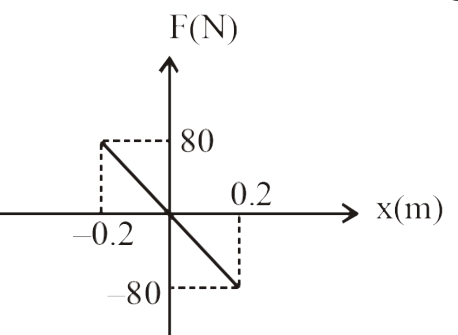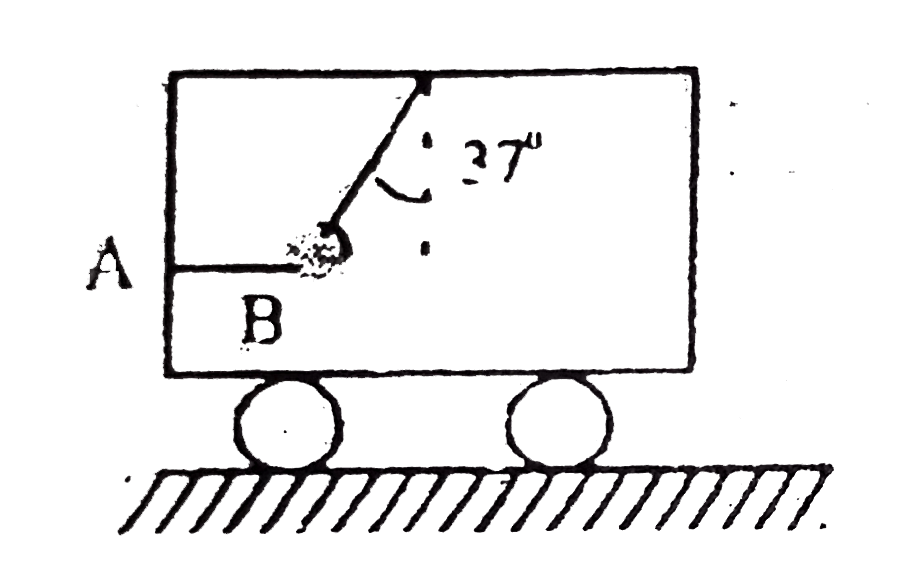Two bodies of masses 1 kg and 4 kg are connected to a vertical spring, as shown in the figure. The smaller mass executes simple harmonic motion of angular frequency 25 rad s−1, and amplitude 1.6 cm while the bigger mass remains stationary on the ground. The maximum force exerted by the system on the floor is (take g=10ms−2).

20 N
60 N
40 N
10 N
The correct Answer is:B
Step by step video, text & image solution for Two bodies of masses 1 kg and 4 kg are connected to a vertical spring, as shown in the figure. The smaller mass executes simple harmonic motion of angular frequency "25 rad s"^(-1), and amplitude 1.6 cm while the bigger mass remains stationary on the ground. The maximum force exerted by the system on the floor is ("take "g=10ms^(-2)). by Physics experts to help you in doubts & scoring excellent marks in Class 12 exams.
Updated on:21/07/2023Topper's Solved these Questions
Similar Questions
A block of mass 5 kg executes simple harmonic motion under the restoring force of a spring. The amplitude and the time period of the motion are 0.1 m and 3.14 s respectively. Fnd the maximum force exerted by the spring on the block.
View Solution
Two blocks of masses 5 kg and 10 kg are connected by a massless spring as shown in the diagram. A force of 100 N acts on 10kg mass as shown. At a certain instant the acceleration of 5 kg mass is 12 m/s2 find the force in the spring and acceleration of 10 kg mass.
View Solution
Knowledge Check
Two simple harmonic motions of angular frequency 100rads−1 and 1000rads−1 have the same displacement amplitude. The ratio of their maximum accelerations is
A1:10B1:102C1:103D1:104Two bodies of mass 6 kg and 4 kg are tied to a string as shown in the following figure. If the table is smooth and pulley frictionless, then acceleration of mass 6 kg will be (g=10ms−2)
 A60ms−2B40ms−2C6ms−2D4ms−2
A60ms−2B40ms−2C6ms−2D4ms−2A ball hung from a vertical spring oscillates in simple harmonic motion with an angular frequency of 2.6 rad/s and an amplitude of 0.075m. What is the maximum acceleration of the ball?
A0.13m/s2B0.20m/s2C0.51m/s2D2.6m/s2
A body A of mass m1=1kg and a body B of mass m2=4kg are attached to the ends of a spring. The body A performs vertical simple harmonic oscillations of amplitude a=1.6cm and angular frequencyomeg=25rads. Neglecting the mass of the sppring determine the maximum and minimum values of force the system exerts on the surface on which in rests.
[Take g=10m/s2]

View SolutionA body of mass 0.01 kg executes simple harmonic motion about x = 0 under the influence of a force as shown in figure. The time period of SHM is

View SolutionA bob B of mass 1kg is suspended form the ceiling of a toy train as shown in the figure the train oscillates simple harmonically in horizontal direction with angular frequency ω=5rad/s amd amplitude a=0.1mwhat is the ratio of maximum and minimum tensions in the string AB during the motion (g=10ms−2&tan37∘=3/4)

View SolutionA block of mass 2kg executes simple harmonic motion under the reading from at a spring .The angular and the time period of motion are 0.2cm and 2πsec respectively Find the maximum force execute by the spring in the block.
View SolutionA liquid of mass 1 kg is filled in a flask as shown in figure. The force exerted by the flask on the liquid is (g=10m/s2) [Neglect atmospheric pressure]:

View Solution
